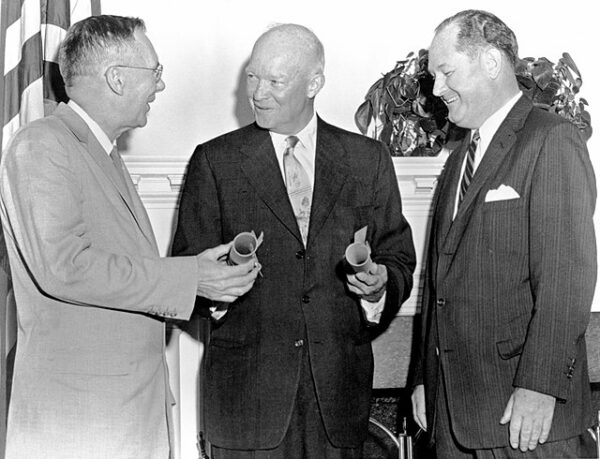On July 29, 1958, President Dwight D. Eisenhower signed the National Aeronautics and Space Act, establishing the National Aeronautics and Space Administration (NASA). This pivotal moment in history marked the beginning of a new era in space exploration and science, laying the groundwork for the United States’ leadership in space. The creation of NASA was driven by a combination of scientific ambition, political necessity, and national security concerns, particularly in the context of the Cold War and the Space Race with the Soviet Union.
The impetus for NASA’s creation traces back to the launch of the Soviet satellite Sputnik 1 on October 4, 1957. Sputnik’s success shocked the United States and ignited fears that the Soviet Union was surpassing the U.S. in technological prowess, especially in missile technology. This event underscored the need for a coordinated and robust American response to the burgeoning space race. Eisenhower, recognizing the importance of space exploration for national security and technological advancement, pushed for the establishment of a civilian space agency that would harness the scientific expertise of the nation.
NASA’s establishment was not merely a reaction to Sputnik but also a strategic move to ensure that space exploration would be conducted for peaceful purposes. Eisenhower was particularly keen on maintaining civilian control over space activities to avoid the militarization of space. The National Aeronautics and Space Act explicitly stated that NASA would conduct space activities “for the benefit of all mankind,” emphasizing peaceful exploration and scientific discovery. This vision was in stark contrast to the military-driven space programs of the time and set the tone for NASA’s future endeavors.
The creation of NASA consolidated several existing space-related programs and organizations, including the National Advisory Committee for Aeronautics (NACA), which had been established in 1915 to oversee aeronautical research. NACA’s facilities, personnel, and resources were absorbed into the new agency, providing NASA with a strong foundation in aeronautics and engineering. This integration ensured that NASA would have the necessary expertise and infrastructure to embark on ambitious space missions.
One of NASA’s first major projects was the Mercury program, which aimed to send the first American astronauts into space. This program was a direct response to the Soviet Union’s early achievements in manned spaceflight, including the historic flight of Yuri Gagarin in 1961. The Mercury program culminated in the successful orbital flight of John Glenn on February 20, 1962, marking a significant milestone for NASA and restoring American confidence in the space race.
Beyond the Mercury program, NASA quickly expanded its horizons, embarking on a series of increasingly complex and ambitious missions. The Gemini program, which followed Mercury, focused on developing the skills and technology needed for longer spaceflights and spacewalks. This program paved the way for the Apollo program, which aimed to achieve the ultimate goal of landing humans on the Moon. The Apollo program’s success, particularly the historic Apollo 11 mission in 1969, when Neil Armstrong and Buzz Aldrin became the first humans to walk on the lunar surface, was a testament to NASA’s rapid development and Eisenhower’s visionary leadership.
Eisenhower’s decision to create NASA also had significant long-term implications for science and technology. NASA’s research and development efforts have led to numerous technological advancements, many of which have found applications beyond space exploration. Innovations in fields such as telecommunications, medical technology, materials science, and computer technology can trace their origins back to NASA’s pioneering work.






